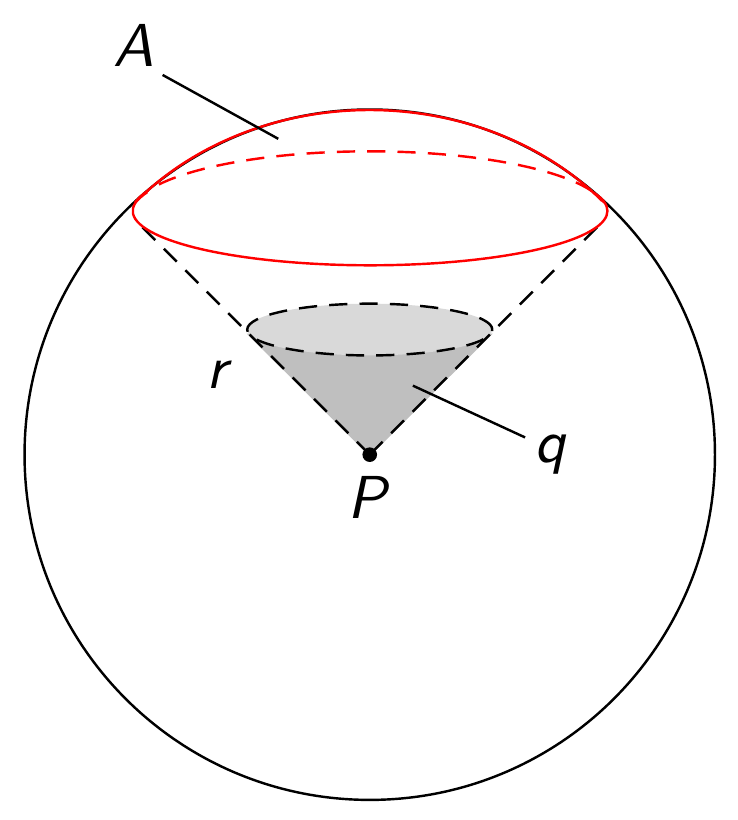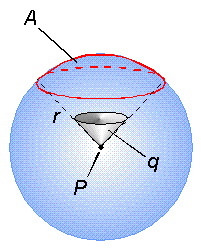Ich habe kürzlich ebenfalls ein geometrisches Gebilde erzeugt und sah mich durch Dein Anliegen motiviert, auszuprobieren, ob ich das hinkriege.
Den Quelltext in der scope-Umgebung nahm ich von
"TikZ: inverted cone (similar to linked thread but different issue)".
\documentclass[tikz, border=5pt]{standalone}
\usepackage{sansmath}
%\usetikzlibrary{shadings}
\usetikzlibrary{intersections}
\begin{document}
\begin{tikzpicture}[font=\sansmath]
\coordinate (O) at (0,0);
% Hintergrundfarbe der Kugel
%\shade[ball color=blue,opacity=0.2] (0,0) circle [radius=2cm];
% Kegel
\begin{scope}
\def\rx{0.71} % horizontal radius of the ellipse
\def\ry{0.15} % vertical radius of the ellipse
\def\z{0.725} % distance from center of ellipse to origin
\path[name path=ellipse] (0,\z) ellipse ({\rx} and {\ry});
\path[name path=horizontal] (-\rx,\z-\ry*\ry/\z) -- (\rx,\z-\ry*\ry/\z);
\path [name intersections={of = ellipse and horizontal}];
% Radien bis zur Grundfläche des Kegels in der Kugel
\draw[fill=gray!50, gray!50] (intersection-1) -- (0,0) -- (intersection-2) -- cycle;
% Grundfläche des Kegels in der Kugel
\draw[fill=gray!30, densely dashed] (0,\z) ellipse ({\rx} and {\ry});
\end{scope}
% Beschriftung des Kegels
\draw (0.25,0.4) -- (0.9,0.1) node at (1.05,0.0) {$q$};
% Kugel
\draw (O) circle [radius=2cm];
% Beschriftung des Mittelpunktes der Kugel
\filldraw (O) circle (1pt) node[below] {$P$};
% Radien
\draw[densely dashed] (O) to [edge label=$r$] (-1.33,1.33);
\draw[densely dashed] (O) -- (1.33,1.33);
% Ausschnitt der Kugeloberfläche
\draw[red] (-1.35,1.47) arc [start angle=140, end angle=40, x radius=17.6mm, y radius=14.75mm];
\draw[red, densely dashed] (-1.36,1.46) arc [start angle=170, end angle=10, x radius=13.8mm, y radius=3.6mm];
\draw[red] (-1.29,1.52) arc [start angle=-200, end angle=20, x radius=13.75mm, y radius=3.15mm];
% Beschriftung des Ausschnitts der Kugeloberfläche
\draw (-1.2,2.2) -- (-0.53,1.83) node at (-1.37,2.37) {$A$};
\end{tikzpicture}
\end{document}



